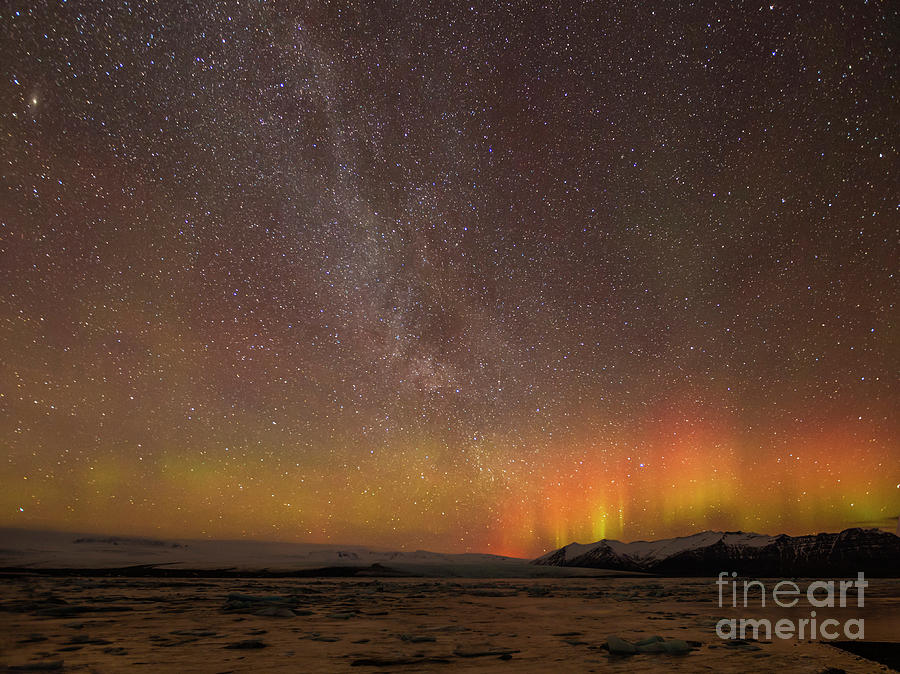
Aurora and milky way, Iceland

by Neale And Judith Clark
Title
Aurora and milky way, Iceland
Artist
Neale And Judith Clark
Medium
Photograph - Photography
Description
Aurora borealis or Northern Lights and Milky Way galaxy Jokulsarlon Iceland Europe - it was faint but it was there!!!! At -12deg celcius we stood for a couple of hours after midnight but at least we saw the elusive lights
The Milky Way is the galaxy that contains our Solar System, with the name describing the galaxy's appearance from Earth: a hazy band of light seen in the night sky formed from stars that cannot be individually distinguished by the naked eye.
From Earth, the Milky Way appears as a band because its disk-shaped structure is viewed from within.
An aurora sometimes referred to as polar lights (aurora polaris), northern lights (aurora borealis), or southern lights (aurora australis), is a natural light display in the Earth's sky, predominantly seen in high-latitude regions (around the Arctic and Antarctic).
Auroras are the result of disturbances in the magnetosphere caused by solar wind.
In northern latitudes, the effect is known as the aurora borealis or the northern lights. The former term was coined by Galileo in 1619, from the Roman goddess of the dawn and the Greek name for the north wind.
Auroras result from emissions of photons in the Earth's upper atmosphere, above 80 km (50 mi), from ionized nitrogen atoms regaining an electron, and oxygen atoms and nitrogen based molecules returning from an excited state to ground state. They are ionized or excited by the collision of particles precipitated into the atmosphere. Both incoming electrons and protons may be involved. Excitation energy is lost within the atmosphere by the emission of a photon, or by collision with another atom or molecule:
oxygen emissions - green or orange-red, depending on the amount of energy absorbed.
nitrogen emissions - blue, purple or red; blue and purple if the molecule regains an electron after it has been ionized, red if returning to ground state from an excited state.
Alamy reference EGDM14
Uploaded
January 7th, 2020
Statistics
Viewed 5,111 Times - Last Visitor from New York, NY on 04/20/2024 at 12:07 PM
Embed
Share
Sales Sheet

















































